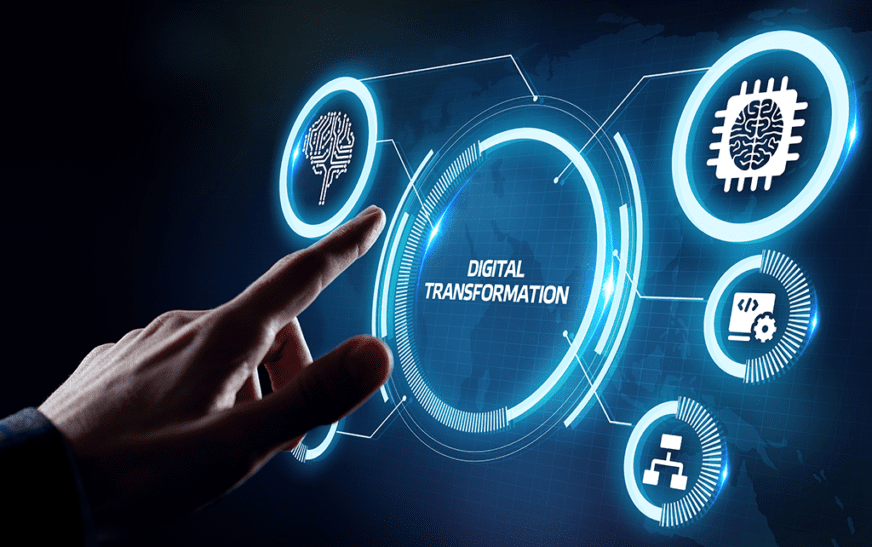Big data is transforming industries around the world, revolutionizing the way businesses operate, make decisions, and interact with their customers. With the advent of the Internet of Things (IoT), cloud computing, and machine learning, the amount of data being generated has increased exponentially. Organizations can now collect, analyze, and leverage this data to gain deeper insights, increase efficiency, and innovate like never before. From healthcare and finance to retail and manufacturing, big data is reshaping industries.
This paper explores what big data is, the technology behind big data, how big data is transforming various fields, the challenges big data poses, and the future prospects for big data in the industry as a whole.
1. what is big data?

Big data refers to the massive amounts of structured, semi-structured, and unstructured data generated every second by businesses, consumers, and devices. This data is too large and too complex to be efficiently managed by traditional data processing software. However, advances in technology, particularly in storage, processing, and analytics, have made it possible to analyze these massive data sets and derive valuable insights.
Big data can be characterized by three V’s
Volume: quantity: the sheer volume of data generated from a variety of sources, including social media, IoT devices, and online transactions.
Velocity: the speed at which data is generated and processed in real time.
Diversity: a wide range of data types, including text, images, video, and sensor data.
The fourth V, Veracity, refers to the reliability of data, which is essential for accurate decision making.
2. technologies supporting Big Data

Big Data is enabled by a number of technologies that work together to collect, store, and analyze large data sets.
2.1. cloud computing
The rise of cloud computing has contributed significantly to the big data revolution: cloud platforms such as Amazon Web Services (AWS), Google Cloud, and Microsoft Azure provide a scalable infrastructure for data storage and processing. data storage and processing. This scalability allows companies to manage fluctuating data volumes without a large upfront investment in hardware.
2.2. distributed databases
Technologies such as Hadoop and Apache Spark enable distributed storage and processing of data across clusters of computers. This means that large data sets can be broken down into smaller chunks and processed in parallel, greatly speeding up data analysis.
2.3. Machine Learning and AI
Machine learning algorithms are essential to the analysis of big data. These algorithms can identify patterns, predict trends, and make recommendations based on data; AI-powered systems can also automate the decision-making process, further increasing the value of big data.
2.4. IoT (Internet of Things)
IoT devices, from sensors in manufacturing plants to smart home devices, generate vast amounts of real-time data. This data can be analyzed to optimize performance, improve efficiency, and enhance customer experience.
3. big data in healthcare

The healthcare industry is one of the biggest beneficiaries of Big Data. From improving patient care to optimizing hospital operations, Big Data is reshaping healthcare in many ways.
3.1. predictive analytics for patient care
Big Data enables healthcare providers to more accurately predict patient outcomes. By analyzing a patient’s medical history, genetic information, and real-time health data, predictive analytics can predict the likelihood of disease and suggest personalized treatment plans. For example, IBM Watson Health uses big data to analyze medical literature and patient data to help physicians make better clinical decisions.
3.2. operational efficiency in hospitals
Hospitals are using big data to improve operational efficiency and reduce costs. Data analysis can optimize resource allocation, improve staffing, and predict patient admissions. For example, Johns Hopkins Hospital uses predictive analytics to manage operating room schedules, reducing patient wait times and increasing surgical efficiency.
3.3. medical research and drug development
Big data accelerates drug discovery and drug development by analyzing large datasets of clinical trials, patient responses, and genetic data. Pharmaceutical companies such as Pfizer and Roche are using data analytics to identify new drug candidates faster and more efficiently than traditional methods.
4. big data in finance

The financial industry has been an early adopter of big data technology, using it to improve the customer experience, detect fraud, and improve decision making.
4.1. risk management and fraud detection
Financial institutions such as JP Morgan Chase and HSBC are using big data analytics to monitor transactions in real time and identify fraudulent activity. Machine learning algorithms analyze patterns in transaction data to detect anomalies such as unusual spending behavior or login attempts from unknown locations. These systems can flag suspicious transactions for further investigation, thereby reducing the risk of fraudulent activity.
4.2. personalized banking and financial services
Big data will allow banks to offer personalized services based on customer behavior and preferences. For example, banks can analyze consumption habits and provide personalized investment recommendations and credit products. Capital One uses data analytics to offer personalized credit cards to increase customer satisfaction and retention.
4.3. algorithmic trading
Big data powers algorithmic trading, where computer algorithms analyze market data and execute trades at high speed. Hedge funds and investment firms are using big data to understand market trends and make decisions in real time to maximize profits while minimizing risk. Companies like Renaissance Technologies and Two Sigma use advanced data analytics to drive their trading strategies.
Retailers are leveraging big data to gain insights into consumer behavior, optimize supply chains, and improve the customer experience.
5.1. personalized shopping experience
E-commerce giants such as Amazon and Alibaba are leveraging big data to provide personalized shopping experiences. By analyzing a customer’s browsing and purchase history, these platforms recommend products that are in line with personal preferences. This not only increases customer satisfaction, but also increases sales and loyalty.
5.2. inventory and supply chain optimization
Big data helps retailers optimize inventory management by forecasting the demand for products based on historical sales data and market trends. This allows companies to maintain appropriate inventory levels, reduce overstocking, and minimize stock-outs. Wal-Mart uses big data analytics to optimize its supply chain and ensure that customers have access to products when and where they need them.
5.3. customer sentiment analysis
Retailers are also using big data to analyze customer feedback and sentiment from social media, reviews, and surveys. This information helps companies understand customer needs, improve products, and refine marketing strategies. Tools like Salesforce Einstein allow companies to track customer sentiment in real time, enabling them to respond quickly to problems and opportunities.
6. big data in the manufacturing industry
Manufacturing companies are adopting Big Data to increase production efficiency, improve quality control, and reduce operating costs.
6.1. predictive maintenance
Big Data enables predictive maintenance by analyzing data from sensors in machinery and equipment. This allows manufacturers to predict when equipment is likely to fail and schedule maintenance before a breakdown occurs, minimizing downtime and reducing repair costs. General Electric (GE) uses big data analytics in its plants to predict equipment failures and improve overall efficiency.
6.2. supply chain and logistics optimization
Big data helps manufacturers optimize their supply chains by analyzing data on supplier performance, transportation costs, and market demand. This will enable more efficient production planning and inventory management, which will reduce lead times and improve profitability. Companies such as Procter & Gamble (P&G) use data analytics to optimize their supply chains and ensure timely delivery of products.
6.3. quality control and product development
Manufacturers are using big data to monitor quality control in real time and identify defects early in the manufacturing process. This reduces waste and improves product quality. Big data analytics also plays an important role in product development, allowing manufacturers to analyze customer feedback and market trends to design products that better meet consumer needs.
7. big data challenges
While Big Data offers great opportunities, it also presents several challenges that organizations must address to fully exploit its potential.
7.1. data privacy and security
The vast amount of data collected poses significant privacy and security risks. Companies must ensure that sensitive customer information is protected and comply with regulations such as GDPR (General Data Protection Regulation) and CCPA (California Consumer Privacy Act). Data breaches can result in serious reputational damage and financial penalties.
7.2. data quality and integration
For big data analysis to be effective, data must be accurate, complete, and reliable. Poor quality data can lead to false insights and flawed decisions. Furthermore, integrating data from multiple sources, such as social media, sensors, and customer databases, can be difficult.
7.3. skills gap
The demand for data scientists, analysts, and engineers skilled in big data technologies far exceeds the supply. Many companies struggle to find personnel who can effectively manage and analyze large data sets. This skills gap is a major barrier to Big Data adoption.
8. the future of big data
The future of Big Data is bright, and new technologies will further expand its capabilities and applications.
8.1. artificial intelligence and machine learning
As AI and machine learning technologies continue to advance, they will enable more sophisticated analysis of big data; AI-powered systems will be able to identify patterns, predict trends, and make decisions autonomously, further increasing the value of big data across industries.
8.2. edge computing
Edge computing, which processes data closer to the source (e.g., IoT devices), is expected to play an important role in the future of Big Data. This approach will reduce latency and bandwidth requirements associated with sending data to centralized cloud servers and enable real-time data processing.










